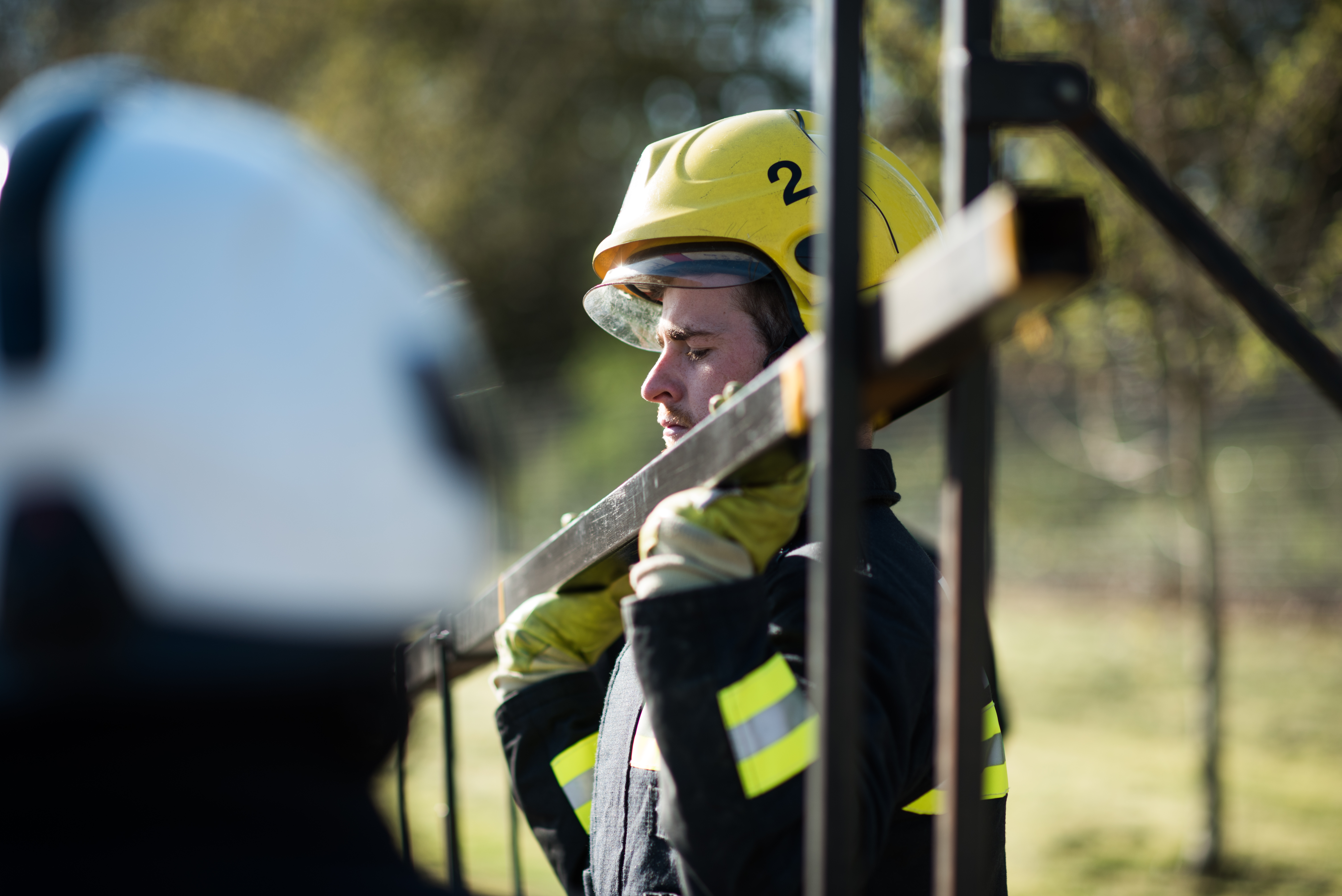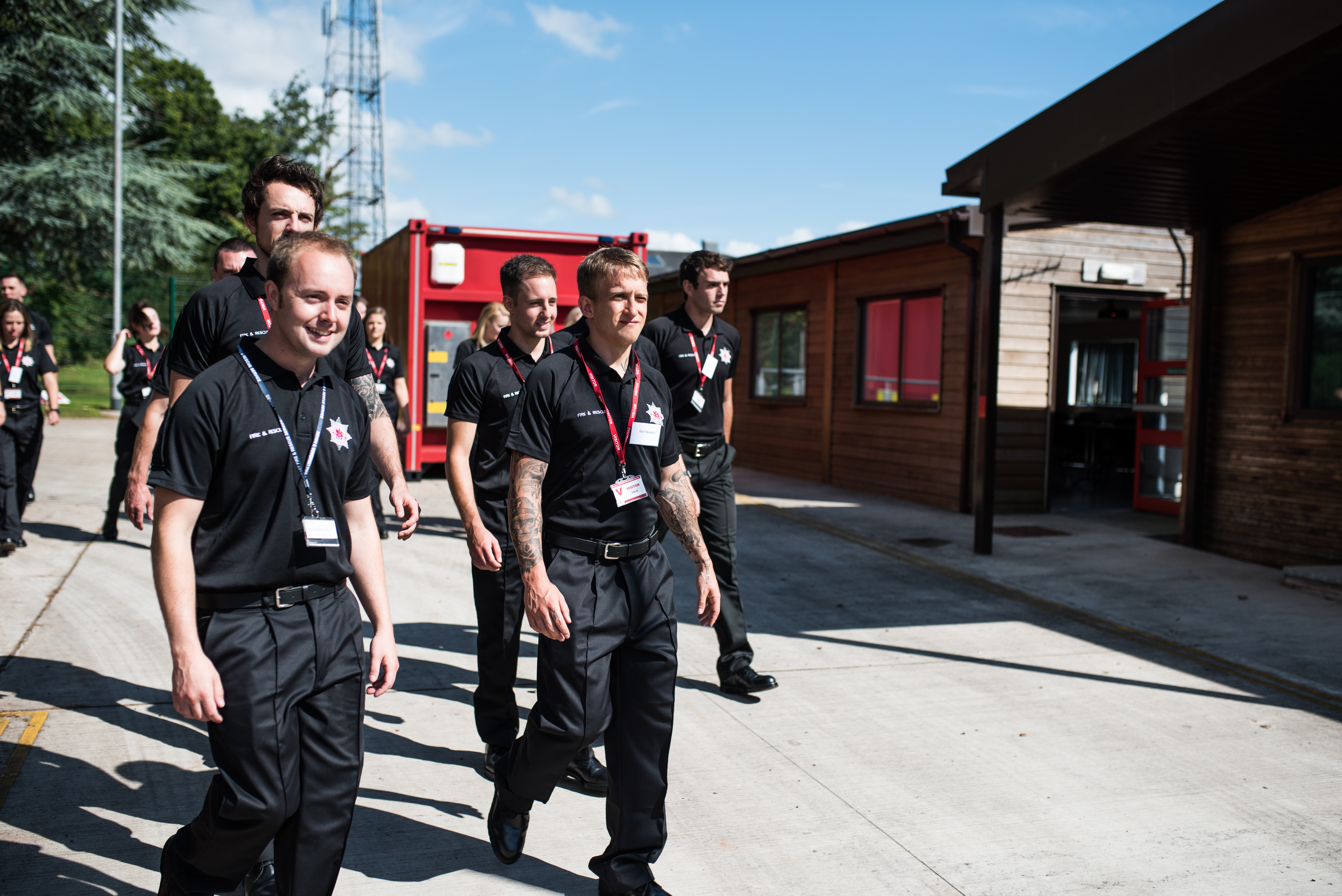Application process for on-call firefighters
Thank you for your interest in working for Devon and Somerset Fire and Rescue Service. We are encouraging people who are interested in joining to meet your local crew and learn more about what becoming an on-call firefighter would involve.
You can apply to be an on-call firefighter now or if you would like to find out more about the role before applying or check if they are recruiting, you can visit your local on-call fire station on their drill night. Details for each station are listed on the Our fire stations page of our website.
Please note that you can apply to any of the stations in the drop-down menu, but not all on-call stations will be recruiting at all times.
There are a few steps to becoming a firefighter. This timeline will take you through the key stages in our application process and what to expect.

Ollie's story
"They really do understand how much time and effort goes into being an on-called firefighter but also the rewards that you get out of it. I love the variety and the people at the station, they really help me learn and develop."
Step one
The first step to becoming a firefighter is the application form. This is where you fill in your personal details and explain how you meet the eligibility criteria.
It's here that you’ll need to be clear about the cover you’re able to provide. The candidates that match the cover that we need at the time will then be brought forward.
Initially, you must only submit one application. When you apply you will be asked to input your National Insurance number in your application form which we will use to identify multiple applications.
Step two
If you are unable to evidence maths and english GCSE Grade C/4 or higher, then you will be required to complete two online ability tests in mathematics and verbal reasoning.
You’ll receive an email link inviting you to take the test, with practice tests too. You can have a go at the practice tests as many times as you like.
Step three
Now it’s time for the interview. This is done face-to-face, and you’ll be asked about your experience, knowledge and skills. It’s here that we want to see whether you’ve got the qualities we’re looking for.
Step four
This element will not only assess your fitness, but your alignment to our core values and your conduct on the day. An important part of being a firefighter is making sure you have a good level of fitness. We assess this through a bleep test.
You'll also do practical assessments, involving the following:
- Ladder lift
- Ladder climb
- Equipment assembly
- Equipment carry
- Breathing apparatus and confined space
Find out more about the fitness and practical tests

Step five
We’ll carry out a medical and further fitness assessment to make sure you’re able to do the role. This includes:
- height and weight measurement to give an idea of general health
- blood pressure test
- urinalysis
- an eye test (with and without glasses if you wear them)
- a breathing test to check your lung function
- a hearing test
- V02 max fitness assessment.
You will attend a medical facilitated by our occupational health provider. They will ask questions about your health and any disabilities or medical needs you may have. All cases are looked at individually while following professional medical guidance.
Our fitness advisers will carry out a fitness assessment as part of the medical called a VO2 max test. You will jog on a treadmill wearing a facemask while connected to an analyser. The gradient and speed will gradually increase. This will measure your lung capacity. This test equates to level 8.8 on the bleep test.
You'll also complete pre-employment checks which will include:
- Right to Work
- Minimum of three years of references
- Driving licence check
- Standard DBS check
Step six
Following the medical and pre-employment stage, once everything is cleared, we will confirm an initial recruits' course date and you’ll receive a contract of employment.
Congratulations
Once you've reached this stage, it's time to celebrate.

V02 max test
Our fitness advisers will carry out a fitness assessment as part of the medical called a VO2 max test. You will jog on a treadmill wearing a facemask while connected to an analyser. The gradient and speed will gradually increase. This will measure your lung capacity. This test equates to level 8.8 on the bleep test.
Attending assessments
Once you have the dates for your assessments, we recommend putting these in your diary or on a calendar. If you arrive late to any of the assessments or forget to attend, you will be withdrawn from the application process.
Re-applying
- If you're unsuccessful at any point during this process, you'll be able to re-apply six months from the date you're told you are unsuccessful.
- If you re-apply and are unsuccessful again, then you will need to wait 18 months before submitting another application.

